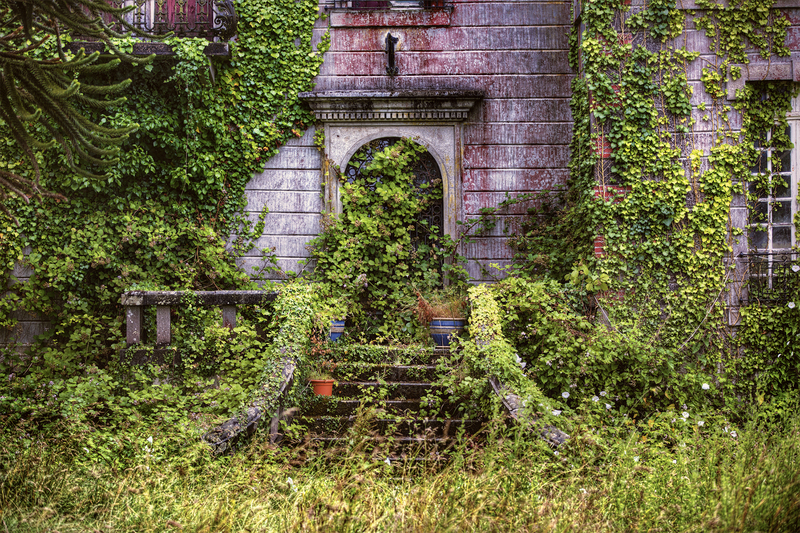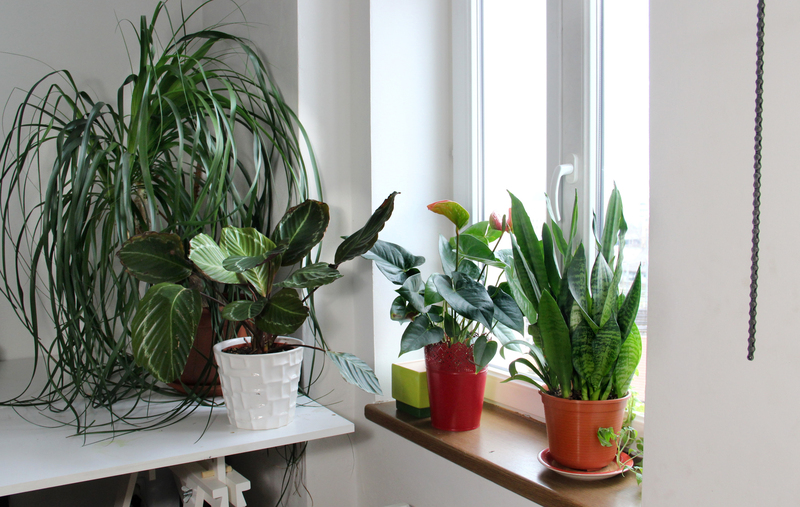Why Container Gardening is Perfect for Limited Spaces
Posted on 14/08/2025
Why Container Gardening is Perfect for Limited Spaces
Are you longing to grow your own fresh herbs, vibrant flowers, or delicious vegetables but feel restricted by lack of space? Container gardening offers the perfect solution for people with small patios, balconies, or even just a sunny windowsill. In this comprehensive guide, we will explore why container gardening perfectly adapts to limited spaces, and provide actionable tips to help you create your own thriving green oasis no matter your living situation.
The Appeal of Container Gardening in Small Spaces
With urbanization on the rise, increasingly more individuals live in apartments or homes with little to no garden area. Despite spatial constraints, the desire for nature, color, and fresh produce remains strong. Small space gardening emerges as a practical, enjoyable, and creative outlet for anyone wanting to connect with plants, reduce stress, enhance their home, and even supplement their diet.
Why is Container Gardening Ideal for Limited Spaces?
- Flexibility: Containers can be moved, rearranged, or replaced as your needs and preferences change.
- Space Efficiency: Even the tiniest areas, such as balconies, rooftops, and windowsills, can accommodate potted plants.
- Control Over Growing Conditions: Container gardens allow you to select the best soil, light, and position for each plant, resulting in healthier growth.
- Accessibility: Raised pots and planters can make gardening easier for people with mobility issues, children, or older adults.
- Immediate Impact: Containers create instant visual interest and can beautify dreary or stark urban environments.

Benefits of Container Gardening in Limited Spaces
Let's dive deeper into why container gardening is not only possible but actually advantageous for those with constrained space:
1. Maximizing Every Inch: Vertical and Horizontal Gardening
If you dream of lush, abundant planters, containers can help you utilize every available surface. Vertical container gardening--using shelves, trellises, or wall-mounted pots--transforms blank walls into living tapestries. This multiplies your growing area far beyond the floor or ground space you have.
- Vertical planters: Install pocket planters or stack pots on stands to make use of walls and railings.
- Rail planters: Clip containers onto balcony rails.
- Hanging baskets: Suspend pots from hooks or overhead beams to add greenery at eye level or above.
2. Portability and Mobility
One of the greatest strengths of container gardening for small spaces is the ease with which you can rearrange your plants. This mobility allows you to:
- Follow the sunlight throughout the year
- Shelter delicate plants from adverse weather
- Redesign your outdoor or indoor area quickly for visual refreshment
- Bring sensitive plants indoors during winter
3. Customization and Creative Expression
Limited spaces can spark greater creativity. With container gardening, you have freedom to mix and match shapes, sizes, and materials--from elegant ceramic pots and rustic baskets to upcycled buckets or colorful tins. You can also experiment with plant combinations that add fragrance, texture, and attract pollinators. The design potential is truly limitless!
4. Reduced Risk of Soil-Borne Pests and Diseases
Growing in containers means fresh, high-quality potting soil with controlled nutrients and drainage. This minimizes risks from contaminated ground soil, making your plants less prone to pests and diseases that might otherwise lurk in a traditional garden bed.
5. Simpler Maintenance and Accessibility
Gardening in containers is generally easier for people with limited mobility, busy schedules, or those new to horticulture. With less bending and digging required, you can tend to your plants from a comfortable position or even at tabletop height.
- Fewer weeds: Container soil is less likely to harbor weed seeds.
- Easy watering: Plants grouped together can be watered quickly.
- Closer monitoring: It's simple to spot changes in your plants and act swiftly.
What Grows Well in Containers?
Amazingly, most types of plants can adapt to container life if provided the right care. Here are some ideas for container gardening in small spaces:
Vegetables and Herbs
- Tomatoes, peppers, lettuce, and radishes
- Spinach, kale, and salad greens
- Basil, rosemary, thyme, chives, parsley, cilantro, mint
- Chilies, eggplants, dwarf carrots and beets
Flowers and Decorative Plants
- Petunias, marigolds, pansies, and violas
- Impatiens, begonias, fuchsias for shady spots
- Succulents and cacti for sunny patios
- Ornamental grasses and ferns
Fruits for Containers
- Strawberries in window boxes or hanging pots
- Dwarf citrus trees (lemons, limes, or kumquats)
- Blueberries and small bush varieties
- Miniature apples and figs
The key is choosing varieties bred for compact growth and providing the right container size, soil, water, and light.
Choosing the Right Containers for Small-Space Gardening
When selecting containers, consider the size, material, and drainage requirements for your intended plants:
- Size: Deep-rooted plants like tomatoes need deep pots, while herbs and salad greens can thrive in shallower trays.
- Material: Terracotta provides good breathability but can dry out quickly; plastic retains moisture better but may heat up in direct sun. Lightweight materials are best if you plan to move pots often.
- Drainage: Ensure pots have holes; use saucers or trays to protect surfaces.
Creative Container Ideas
- Upcycled buckets, crates, or bottles
- Hanging baskets and wall planters
- Stackable tower planters for herbs and strawberries
- Window boxes for railings and ledges
- Vertical pallet gardens
*Don't be afraid to get creative--just make sure your chosen vessel allows water to drain so roots stay healthy.
Tips for Successful Container Gardening in Tight Spaces
Ready to start your own container garden? Follow these key tips for a flourishing display, no matter how limited your space is:
Choose the Right Plants
- Select dwarf or compact varieties suited for pots.
- Pay attention to the amount of sunlight your space receives and choose sun- or shade-loving plants accordingly.
- Mix edibles, ornamentals, and trailing plants for interest and maximum use of space.
Use High-Quality Soil
- Don't fill pots with dirt from the yard. Use a light, well-draining commercial potting mix rich in organic matter.
- Consider mixing in slow-release fertilizer or compost for extra nutrients.
Water and Feed Appropriately
- Containers dry out faster than in-ground gardens--check soil moisture regularly, especially in hot weather.
- Feed container plants every few weeks with a liquid fertilizer suited for their type (flowering, fruiting, or leafy).
- Use mulch or pebbles to retain moisture.
Maximize Space with Vertical Solutions
- Install shelves, wall-mounted racks, or vertical towers.
- Use hanging baskets from ceilings, window ledges, or railings.
- Layer pots by height to create a stepped effect and maximize light.
Maintain and Refresh Your Display
- Trim and deadhead regularly to encourage new growth and prolonged flowering.
- Swap out spent seasonal plants for new ones throughout the year.
- Rotate pots to provide balanced sun exposure and prevent legginess.
Common Challenges and Solutions for Container Gardening in Small Spaces
Pest and Disease Management
Limited space means plants may be closer together, increasing the risk of pests. Inspect frequently and remove pests by hand or use organic solutions.
Overcrowding
It's tempting to pack in as many plants as possible, but overcrowding reduces airflow and fosters disease. Stick to the recommended spacing for each type of plant.
Watering Wisely
Over- or under-watering is common in pots. Use self-watering systems or group plants with similar requirements together for easier care.

Growing Community and Sustainability
Another delightful aspect of container gardening in urban environments is the potential for building community. Balcony gardeners often connect over shared tips, swap seeds, or simply inspire neighbors. Additionally, container gardening is sustainable:
- Grow your own herbs and vegetables, reducing food miles and packaging waste.
- Reuse containers and compost plant trimmings, contributing to a greener lifestyle.
The Bottom Line: Container Gardening Makes Every Space Bloom
No matter how small your living area, container gardening proves itself as an accessible, scalable, and rewarding pursuit. Whether you hope to snip fresh basil for your pasta, dazzle neighbors with a floral display, or simply enjoy the mental health benefits of nurturing life, container gardening is perfectly tailored for limited spaces.
Incorporate a few containers at a time, and watch as your outdoor (or indoor) world becomes greener, brighter, and more inviting. The beauty of container gardening is that you are never limited by your space--only by your imagination!
Ready to Start Your Own Container Garden?
Now is the perfect season to transform your tiny balcony, patio, or sunny window into a lush and productive retreat. With the tips and ideas outlined in this article on why container gardening is perfect for limited spaces, you're just a few pots away from reaping the many benefits of gardening--no yard required!

